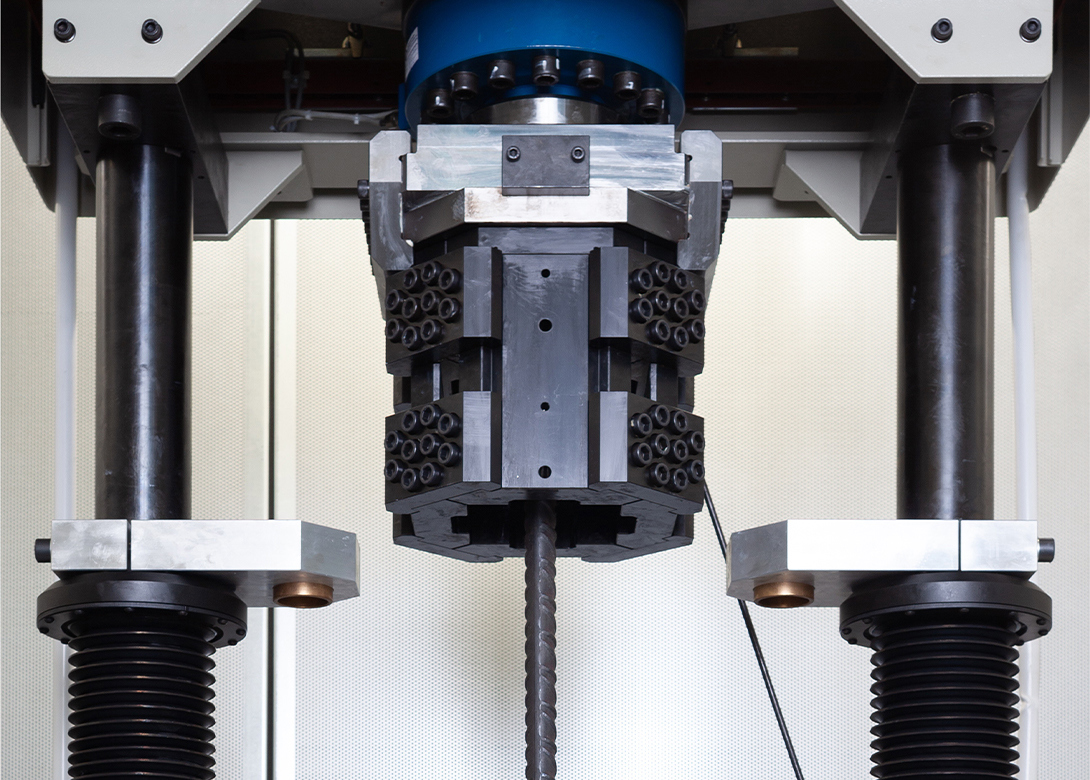
Here Cesare Certini, owner of S.M.T Srl – an independent Italian laboratory specialised in metallurgical testing – looks at the phenomenon known as fatigue, which can sometimes lead to mechanical parts breaking even when the stresses to which they are subjected are lower than the static resistance value.
Failure due to fatigue occurs when pieces are subjected to repeated and time varying loads with a cyclical and/or oscillatory regime and when there are areas with geometric discontinuities or mechanical or metallurgical defects.
Typically, these defects are hidden or microscopic and the formation of fatigue cracks does not involve deformation or reduction of area in the region of failure. This lack of indication of the damage prevents the problem from being detected before the failure.
Due to surface irregularities or the presence of microstructural discontinuities, local stresses can exceed the local yield point, so that by cyclically applying the load, a plastic deformation develops.
The fatigue process can be divided into three phases:
The appearance of the fracture on a mechanical item broken due to fatigue is characterised by two distinct areas, the first relating to the propagation of the crack and the second relating to the final failure due to overload.
Fatigue has been a subject studied since the nineteenth century, but despite this it is believed that, even today, about 75% of mechanical failures are due to this phenomenon.
It is therefore understandable how it is necessary to prevent this occurrence, in particular when the piece is a safety critical part.
For this reason, there are a series of standardised tests, used to verify the fatigue resistance depending on the type of fatigue – flat bending, rotating bending and axial traction.
In the case of axial fatigue, the most widely used international standards are ASTM E466, ASTM E606, ISO 1099 and ISO 12106. These tests involve subjecting a standardised specimen to an alternating stress or cyclic deformation.
The specimen, in the case of the cylindrical section, has the classic hourglass appearance and requires great accuracy in its preparation so that there are no external elements (surface imperfections, hardening, incorrect connector radius) that could influence the final result. The use of the specimen is a necessary approximation in the case in which the characteristics of a material are to be verified, or when the piece made is of complex shape; or when its dimensions are such that it cannot be tested with machine tests existing on the market.
In the fastener field, however, pieces often have dimensions that can be tested directly. Even in the case of parts with large dimensions, test machines with important forces, which can reach up to 2,500kN, can be used. These machines can be of two types: Servo-hydraulic and vibrophore.
Servo-hydraulic machines for dynamic tests keep the load, deformation or displacement constant, depending on the quantity being measured. They are machines that generally work with frequencies in the order of 10Hz – 20Hz.
The alternative to these machines is to exploit the resonance – the specimen or the piece is made to vibrate at a frequency equal to its natural frequency, creating a cyclic field of displacement and deformation such as to cause it to break.
The vibrophore has the characteristic of being able to work at very high frequencies, up to 150Hz. This is an advantage from the point of view of costs, time, energy savings and finally the environment. In fact, working at high frequency, the test times are reduced to about a quarter of those required with servo-hydraulic machines, with a consequent being significant reduction in test costs.
From the point of view of the environment, in addition to a reduction in energy consumption, it must be considered that resonance machines do not use the oils used by the servo-hydraulic machines, thus avoiding the need to manage their disposal.
The machinery of S.M.T Srl includes both types of testing machines, in order to meet the different needs of its customers. Among its latest investments, there is a new 700kN vibrophore machine, capable of testing not only specimens, but important sizes when it comes to the fastener sector, which, as explained above, allow the customer to save both time and money. This machine is routinely used to check the axial fatigue resistance of screws and other components that require very high-test stresses.

Will joined Fastener + Fixing Magazine in 2007 and over the last 15 years has experienced every facet of the fastener sector - interviewing key figures within the industry and visiting leading companies and exhibitions around the globe.
Will manages the content strategy across all platforms and is the guardian for the high editorial standards that the Magazine is renowned.
Don't have an account? Sign Up
Signing up to Fastener + Fixing Magazine enables you to manage your account details.